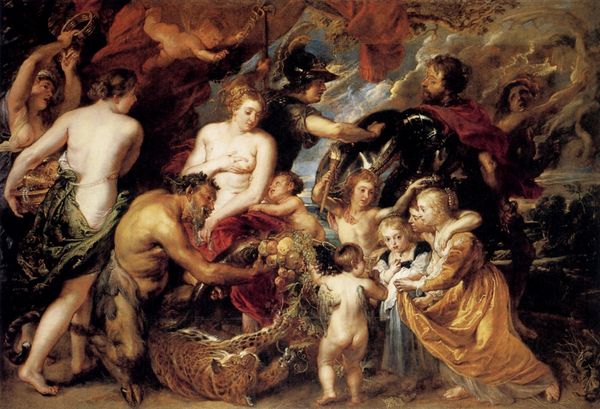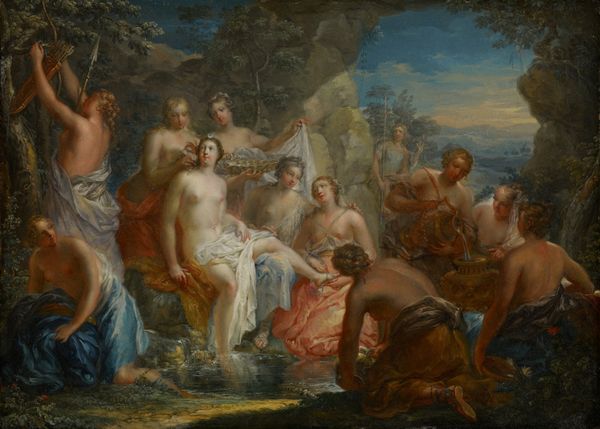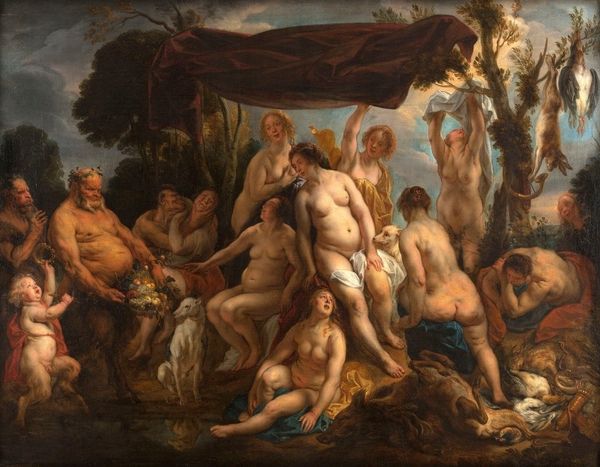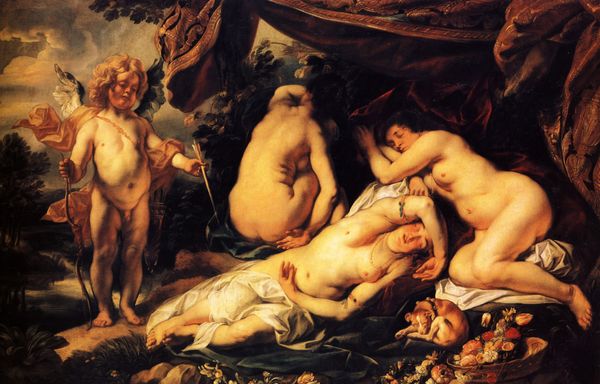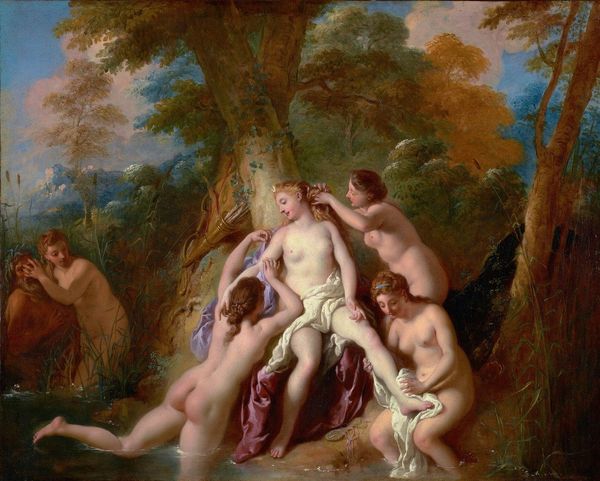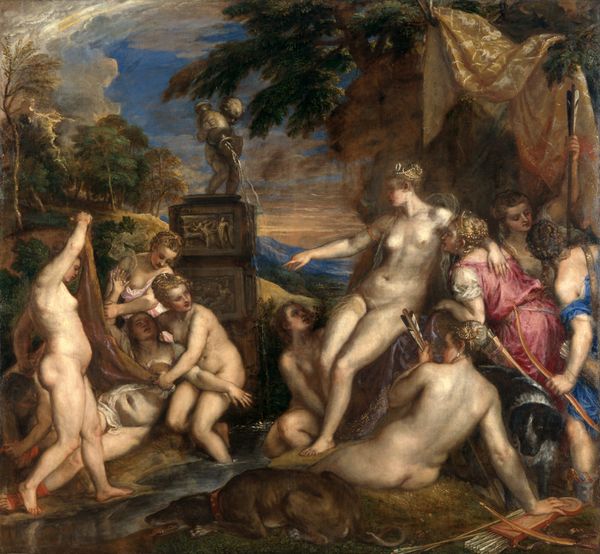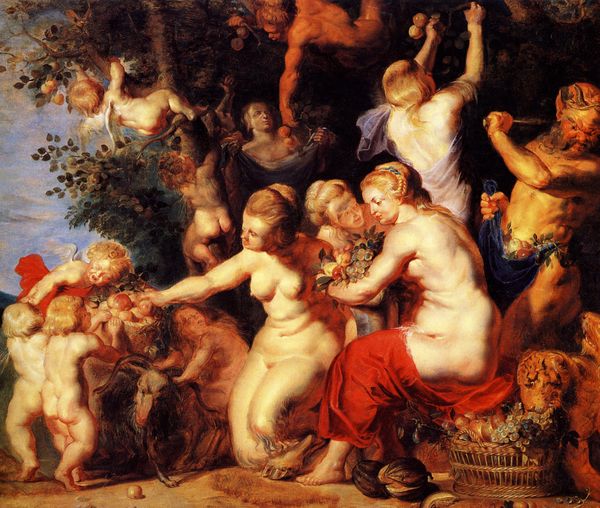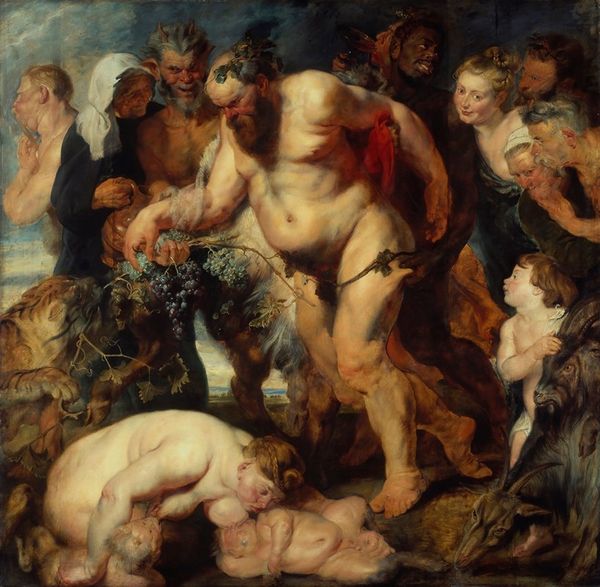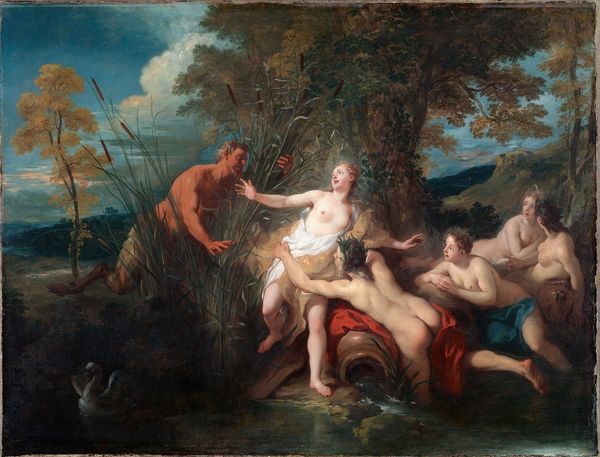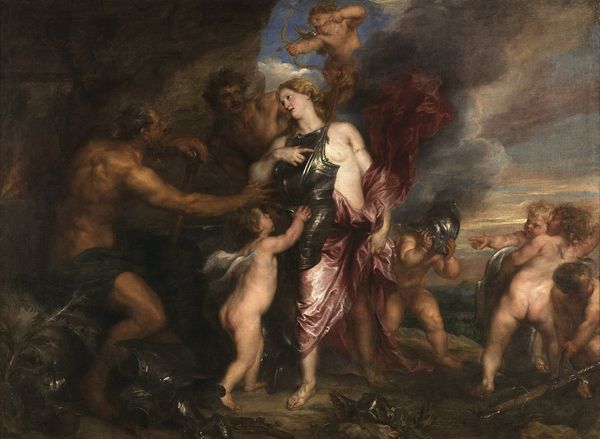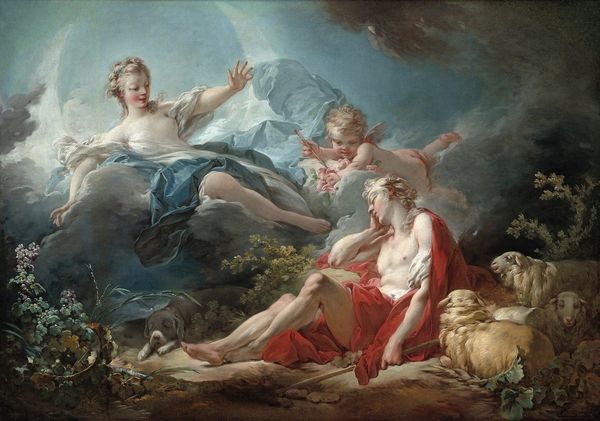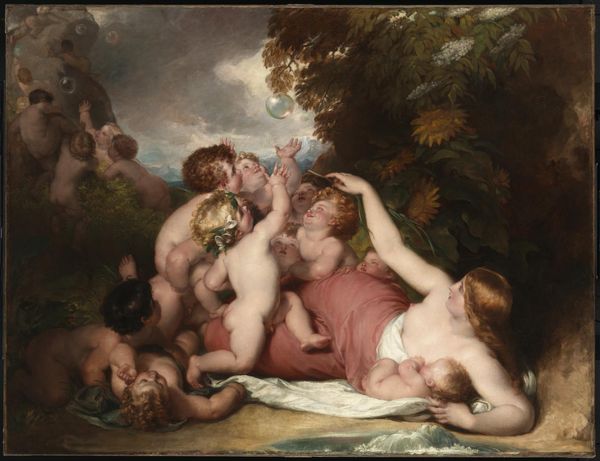
painting, oil-paint
#
baroque
#
painting
#
oil-paint
#
oil painting
#
group-portraits
#
mythology
#
history-painting
#
nude
Copyright: Public Domain: Artvee
Curator: Oh, this is lush! Look at that painterly energy—almost overflowing the frame. Editor: Indeed. What we're looking at is Peter Paul Rubens' "Diana and Callisto," painted around 1635. It depicts a pivotal scene from Ovid’s Metamorphoses. Curator: It’s immediately arresting. The vibrant nudes bathed in this golden light create a sense of both vulnerability and powerful feminine energy. But that darkness creeping in at the edges…there's an ominous undertone, isn't there? Editor: Absolutely. Rubens masterfully weaves together classical mythology and the social anxieties of his time. The tale of Diana, the chaste goddess, and her nymph Callisto, whose pregnancy leads to expulsion and transformation into a bear, was not new in 17th-century painting. But it allowed a view into women, social transgressions and public shaming of ‘unchaste’ women.. Curator: The composition is fascinating. Notice how Diana, accompanied by her dark-skinned servant, points accusingly at Callisto, who cowers under the watchful eyes of the other nymphs. All those sets of eyes are on her... The transformation motif, it’s there. It's this intense, concentrated moment, just before everything changes for Callisto. The serpent instrument at the lower left, alludes to earthly punishment to be given. Editor: The serpent is very common for many other subjects too and probably shouldn't be specifically attached to this subject. Remember the history. Rubens had significant influence. From his prominent role in the Antwerp workshop to his work as a diplomat, he engaged directly in power networks and in effect changed the game. And he was deeply affected by wars and turmoil that made people move, causing an increased amount of interactions in societies and new challenges that it brought to the role of art to record it and find ways to depict those movements in history paintings. Curator: Yes! The painting becomes this really powerful symbol of judgement and morality. We all carry around societal expectations of female purity... Rubens reflects this with striking emotional and visual force. Editor: Very well. Rubens' 'Diana and Callisto' prompts important conversations that resonate across centuries—not only concerning mythology and the place of the arts but especially in addressing complex subjects in art through our place in time, like women and power. Curator: This artwork becomes a conduit for our modern gaze onto this era of thought! Fascinating to revisit!
Comments
No comments
Be the first to comment and join the conversation on the ultimate creative platform.
